
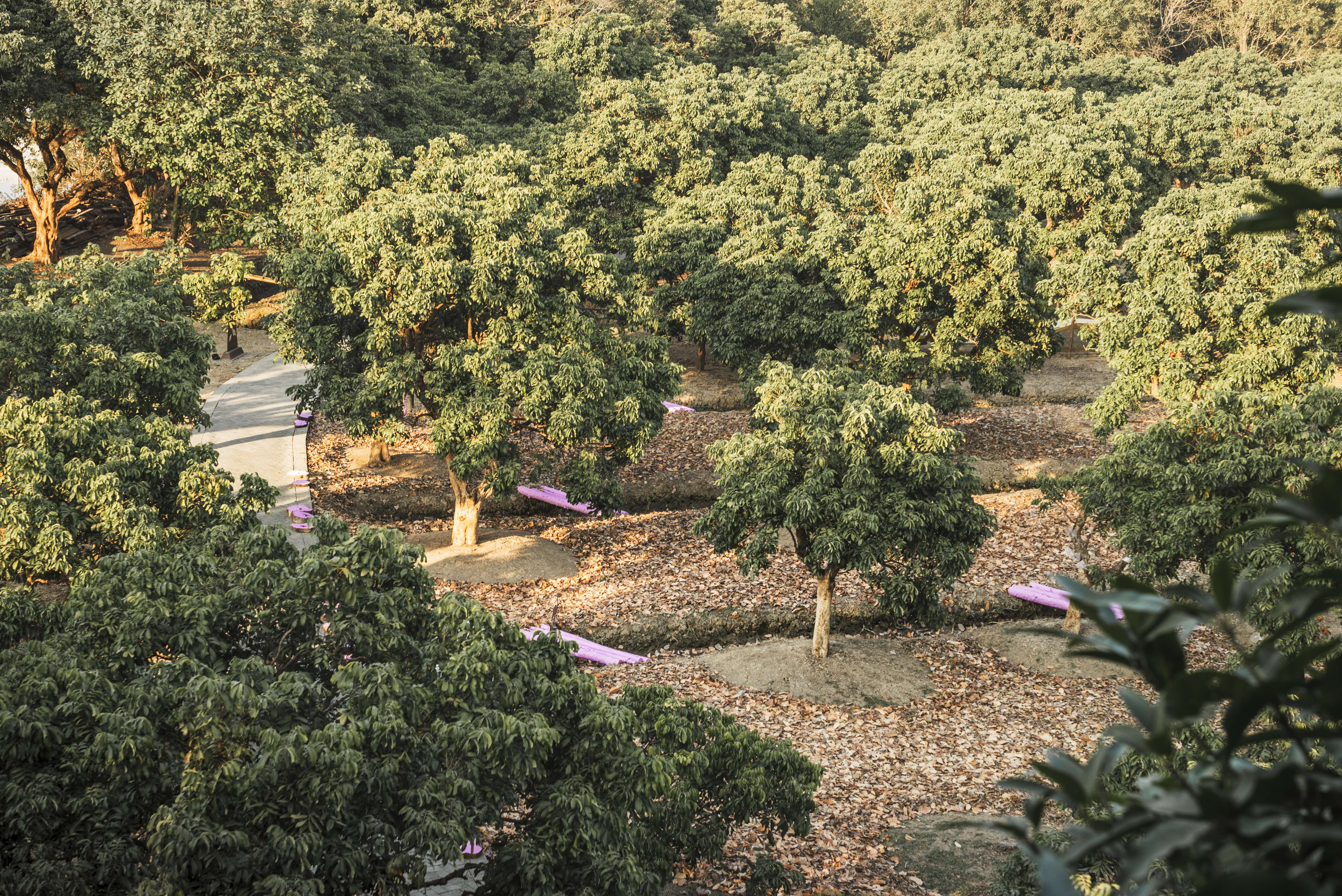
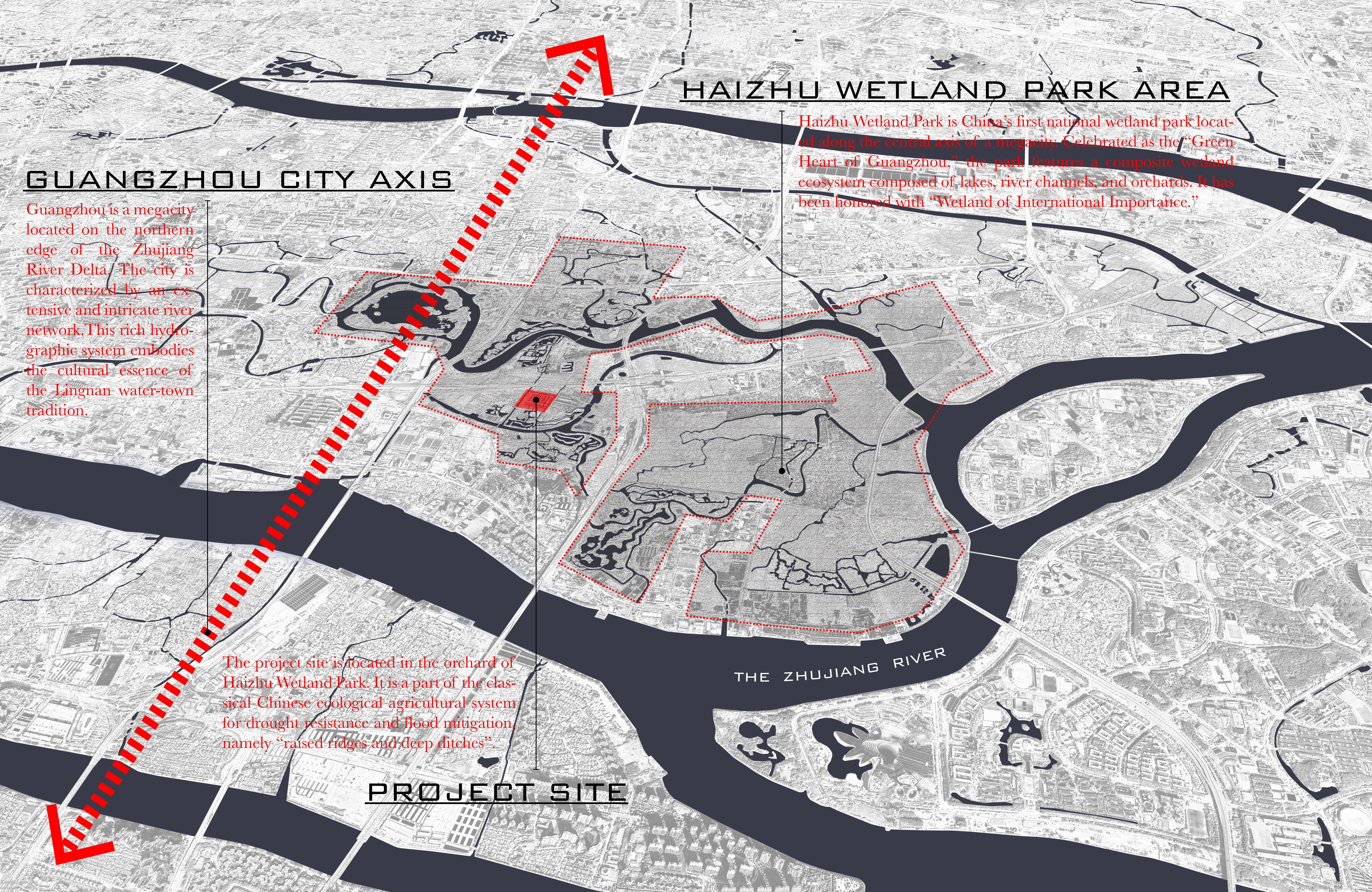
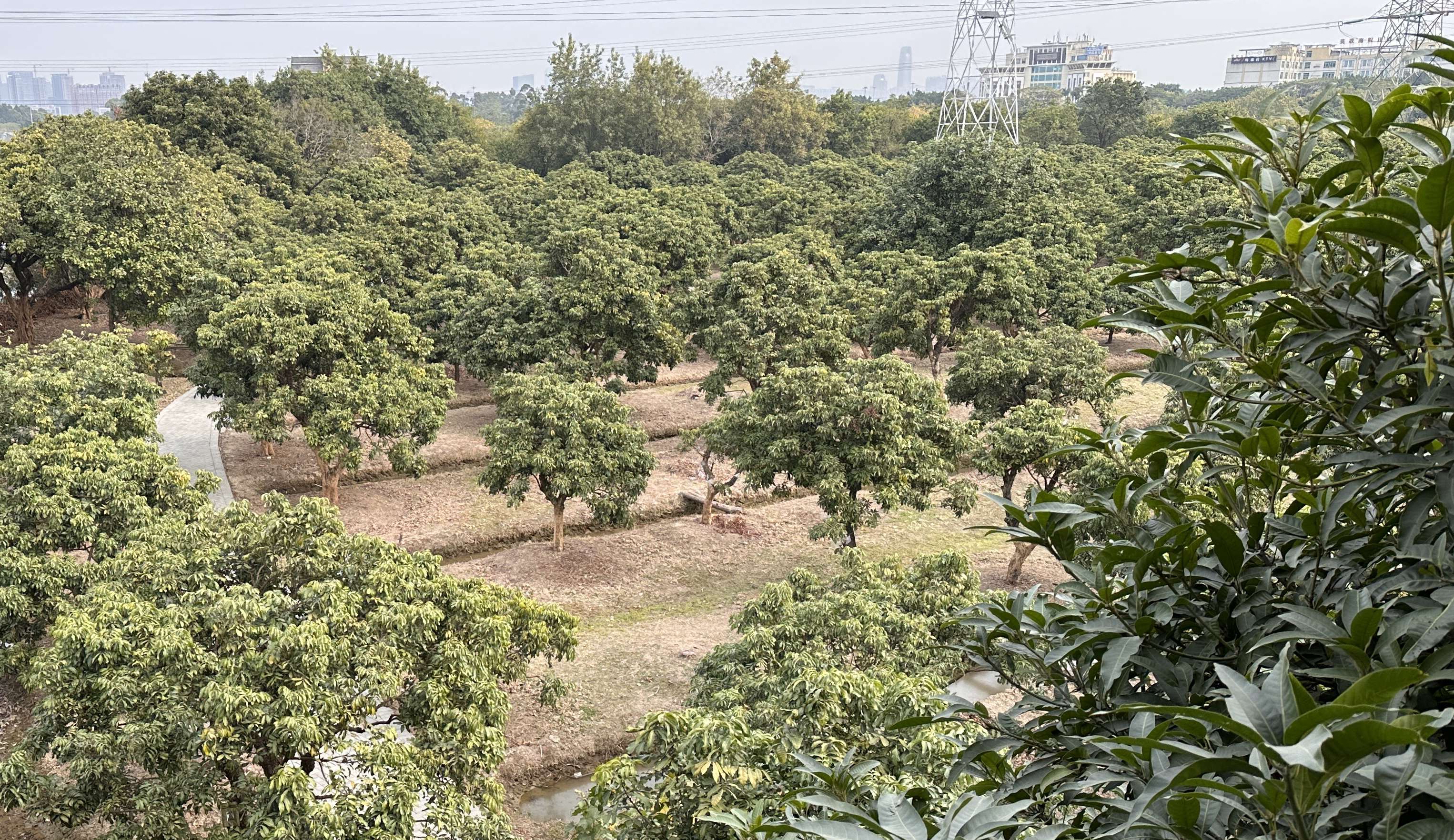
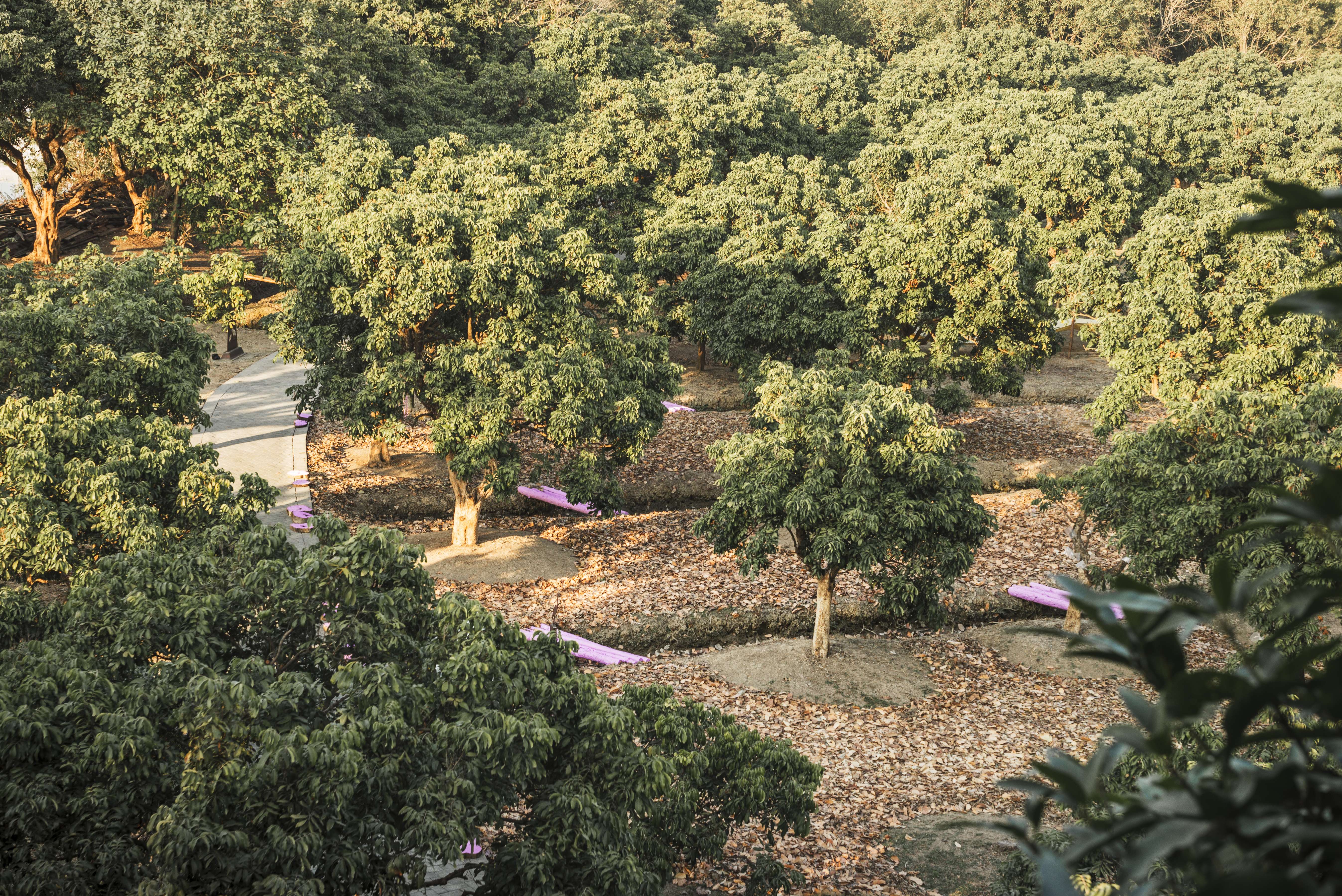
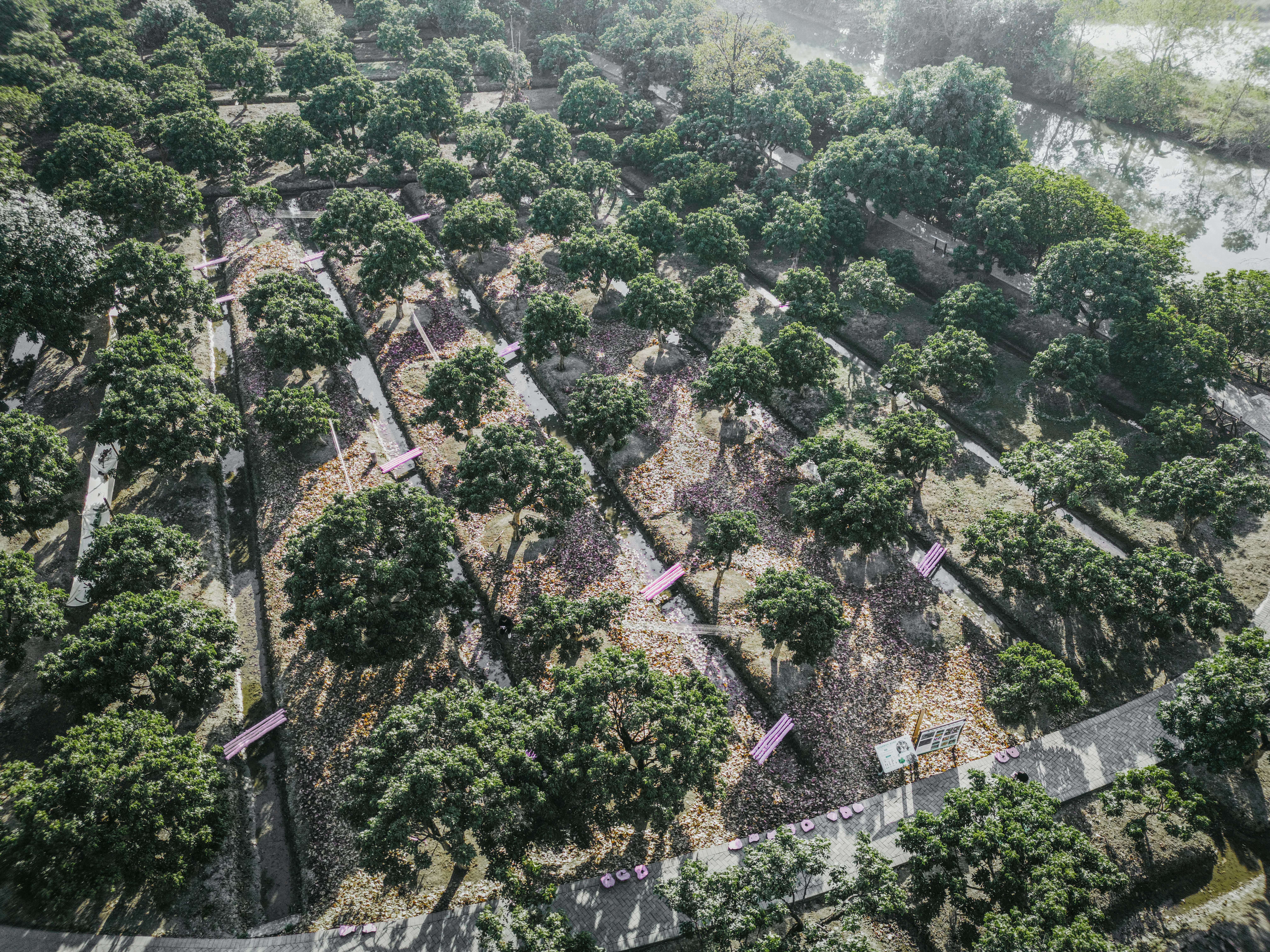

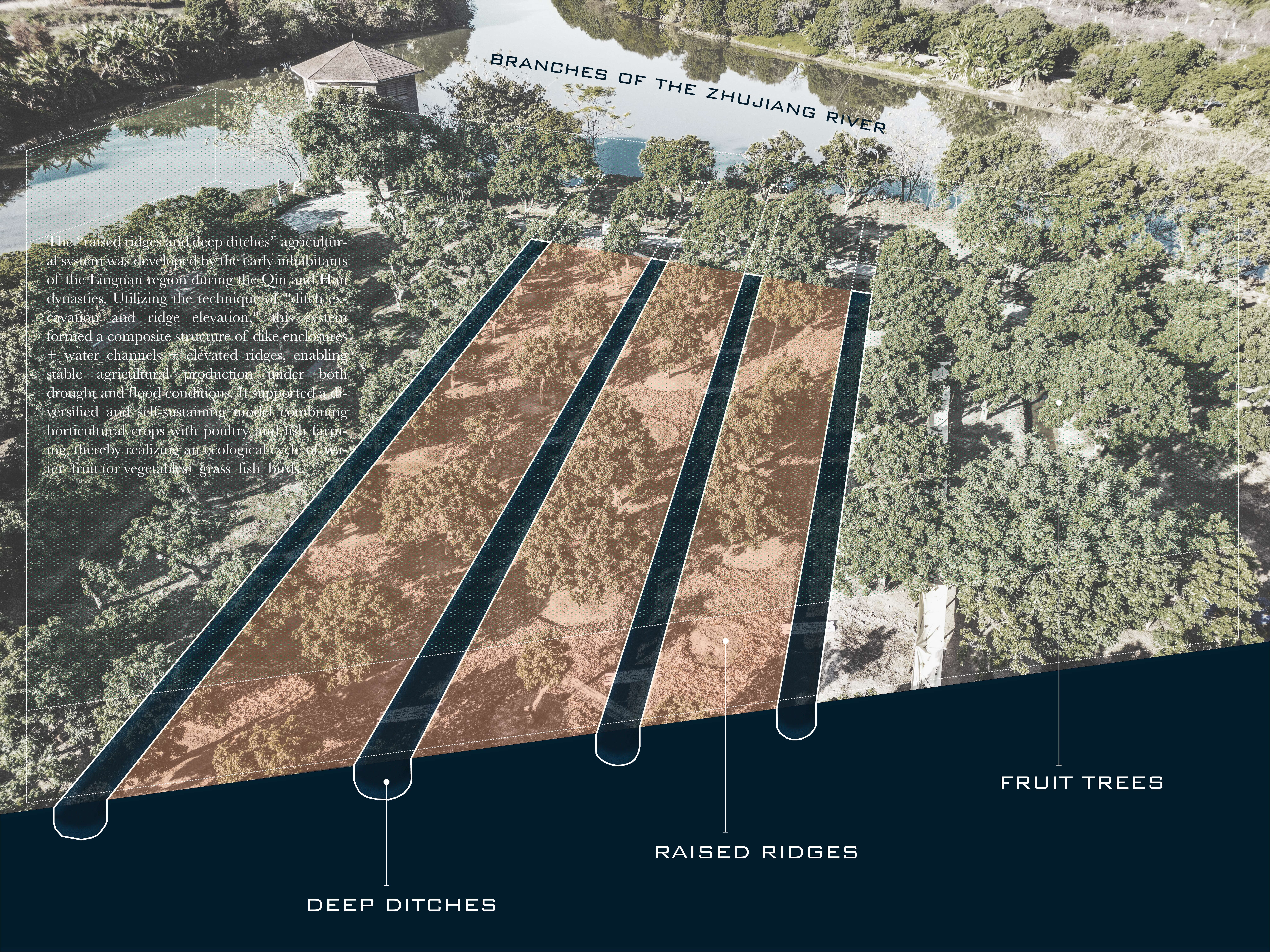

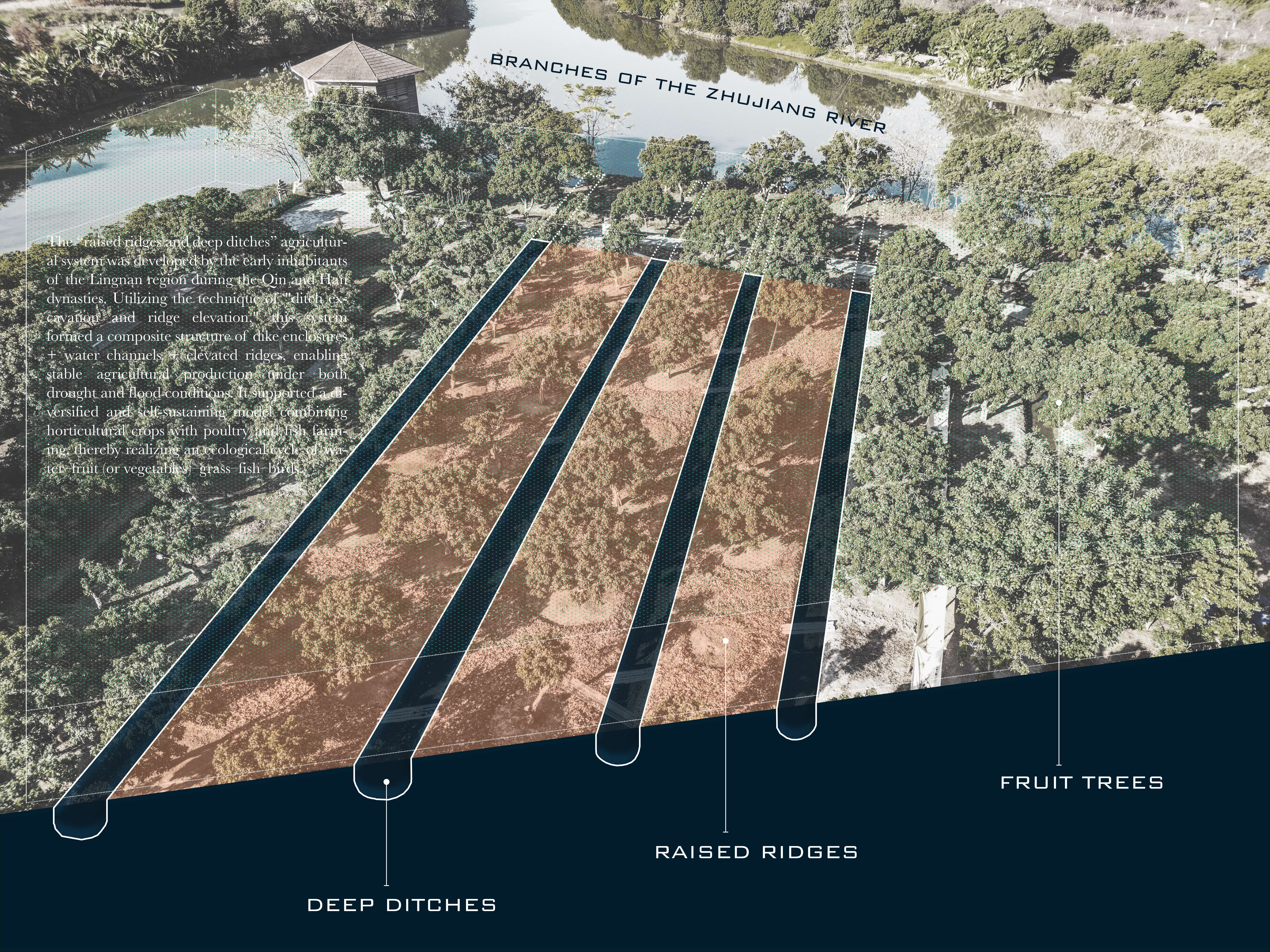

Cruzando la memoria
Cruzando la memoria
CROSSING MEMORY / CHUAN XING
“CROSSING MEMORY / CHUAN XING” is a temporary ecological art landscape created for the 2024 Guangzhou Haizhu Wetland Eco-Art International Biennale. From site survey to project completion, the entire process took only 11 days. All primary materials were sourced from the wetland, and the work was entirely handcrafted by designers and volunteers.
Propersition
The curator required that the artwork fully express the ecological characteristics of the Haizhu Wetland, with all materials sourced locally (within a 5-kilometer radius). Given the implementation constraints, the design also needed to prioritize simple, environmentally friendly techniques, minimizing disruption to the existing ecosystem during both the exhibition and post-exhibition recovery phases.
This dual challenge compelled us to carefully observe the site’s characteristics and explore appropriate forms of expression. At the same time, it required us to abandon conventional thinking and thoughtfully address the curator’s objectives regarding materials, construction methods, maintenance, and recycling, ultimately using the work to convey our understanding of ecological art.
Site
The Haizhu National Wetland Park is located in the southeastern corner of Haizhu District, at the heart of Guangzhou's central urban area. It is a composite wetland system characteristic of delta city lakes and river wetlands, often referred to as the "Green Heart of Guangzhou."
Before becoming a wetland park, this area was once a vast orchard spanning thousands of acres, primarily cultivating longan trees. Fruit trees were interwoven with irrigation channels, which connected to the Pearl River and were controlled by sluice gates to manage water levels for irrigation. The wetland park has retained these productive land features, transforming the site into an "urban orchard wetland" characterized by unique tidal hydrology and abundant fruit tree germplasm resources.
Defining the focus
The work is titled "CHUAN XING" (川行) / CROSSING MEMORY.
"Chuan" (川) refers to the productive landscape of "raised ridges and deep ditches" characteristic of the expansive orchard. The irrigation channels that water the fruit trees create a pattern resembling the Chinese character 川.
"Xing" (行) symbolizes the small bridges crossing these channels, guiding people through the waterways and into the orchards, encouraging them to discover previously unnoticed aspects of this wetland.
The three strokes of the characters 川 (vertical) and 行 (horizontal, diagonal) hint at the spatial order of water, bridges, and trees within the site.
Material & Strategy
Following the principle of utilizing local materials, the work primarily incorporates logs, fallen leaves, and string as its main materials.
「Logs」
We have built pink bridges over the "raised ridges and deep ditches" that irrigate the orchards. These small bridges were originally improvised by fruit farmers as temporary structures to facilitate their work. The design refines this element and reintroduces it into the site with a diagonal order that contrasts with the grid-like arrangement of the water channels and orchard. The pink color highlights the bridges, making them stand out against the natural surroundings, while their inclined orientation conveys an inviting gesture, encouraging people to cross the waterways.
「Fallen Leaves」
Freshly fallen leaves are spread across the ground between the water channels, carefully avoiding the circular fertilization zones around the fruit trees. The sharp contrast between the yellow-green leaves and the soil draws attention to the natural forms shaped by agricultural activities around the trees. Over time, the leaves gradually dry, transitioning from yellow-green to brown and blending into the soil. However, the sound of footsteps on the leaves becomes increasingly crisp, creating a shift in experience from visual to auditory.
「String」
We stretched fine strings between the tree trunks at a height that subtly blurs the everyday line of sight. This makes the footbridge, fallen leaves, and circular mounds stand out more distinctly. The strings also compel people to bend down as they pass through, encouraging close observation of the imprints on Haizhu Wetland’s land. Moreover, the strings capture the interplay of sunlight filtering through the trees and the morning dew, subtly recording the natural changes in the orchard.
With whom do I sit? The Longan trees, the fallen leaves, and the river
Su Shi (one of the most famous Chinese poets in Song Dynasty) once wrote:
"With whom do I sit? The clear breeze, the bright moon, and me."
This scene surpasses it:
"With whom do I sit? The Longan trees, the fallen leaves, and the river."
